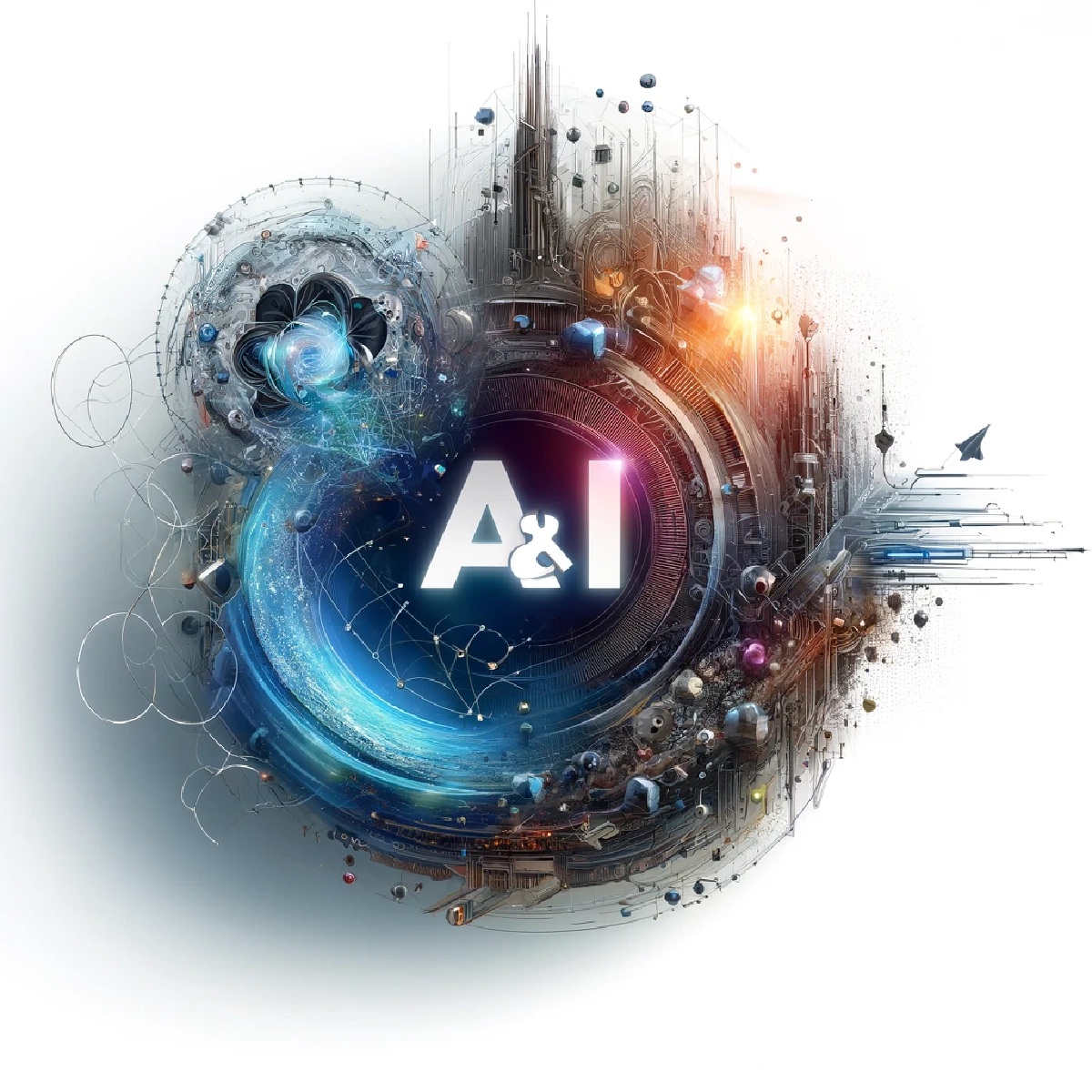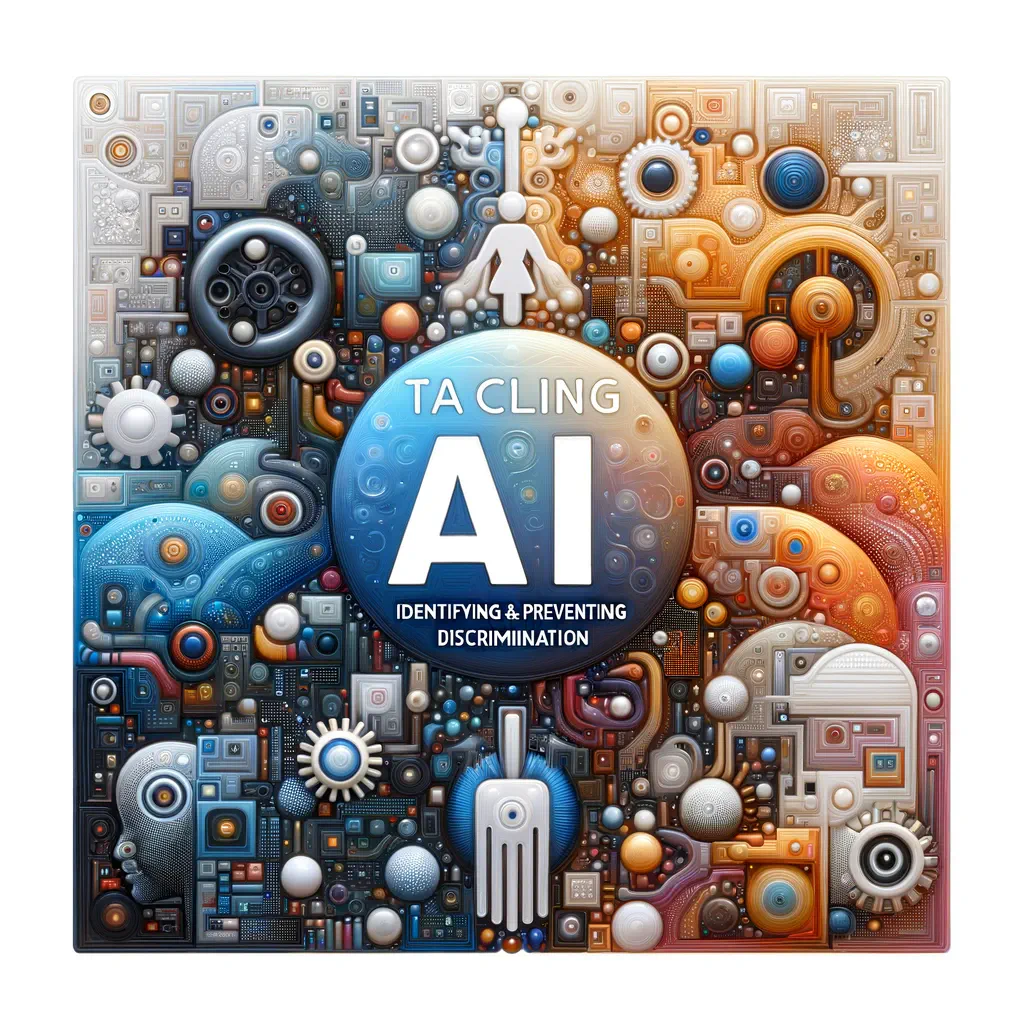
Quantum Computing & AI: Synergies Explored
12 Min read
Quantum computing and artificial intelligence (AI) are two of the most revolutionary technological domains that are …

Artificial intelligence (AI) has the potential to revolutionize numerous industries, but it is not without its pitfalls. One of the most pressing concerns is AI bias, where algorithms exhibit preferential or discriminatory behavior based on data and design flaws. This can lead to significant ethical and social consequences, from skewed hiring practices to unfair loan approvals. In this article, we will delve into what is ai bias, explore its origins in data and algorithms, discuss methods to mitigate these biases through ethical design, and outline strategies to prevent the deployment of discriminatory AI systems, ensuring fairness and equity in AI applications.
Let’s get started!
AI bias occurs when the data or algorithms used in machine learning models reflect human prejudices. This can stem from historical data imbued with societal biases, incomplete datasets, or biased model training processes. The implications of AI bias are extensive and can permeate various sectors
AI bias refers to the systematic and unfair discrimination within AI systems, through unintended prejudices in algorithms. These biases can originate from various sources, primarily the data used to train the models.
When training data contains historical inequalities or lacks diversity, the resulting AI model often perpetuates these biases. Additionally, biases can arise from the way algorithms are designed and implemented, including the selection of certain variables over others, which may inadvertently favor one group.
Gender, race, socioeconomic status, and other attributes can all be subject to bias in AI models. Identifying and addressing these biases is crucial for developing equitable AI solutions and preventing technological discrimination across different applications.
The impact of AI bias is both deep and wide-reaching, affecting individuals and entire communities. In healthcare, biased algorithms might misdiagnose or offer unequal care, often harming marginalized groups the most. In the job market, AI-driven hiring tools could unintentionally favor certain demographics, perpetuating workplace disparities. The finance sector faces similar issues with biased credit scoring systems that may unfairly reject loan applications from specific backgrounds. The criminal justice system is at risk too, where biased AI could lead to unfair sentencing and skewed risk assessments. Such biases not only reinforce existing inequalities but can also worsen them, undermining trust in AI technologies and potentially damaging the reputations of organizations that depend on these systems. Thus, tackling AI biases isn’t just a technical challenge—it’s a moral obligation.
Identifying the sources of bias in AI algorithms is crucial in reducing their harmful effects. A primary source is data bias, which happens when the training data is not representative or leans toward certain groups.
For example, historical data might carry traces of systemic racism or gender bias, embedding these prejudices into the AI models. Another key source is algorithmic bias, stemming from the decisions made during the model’s development, such as choosing certain features or designing the learning process.
These biases can subtly enter through feedback loops, where biased results reinforce the initial inaccuracies. Selection biases in data collection or sampling can further compound these problems. Recognizing and tackling these sources is vital for creating fair and unbiased AI systems that treat all users equally. Employing fairness-aware algorithms and inclusive data practices are essential steps in detecting and correcting biases throughout the AI development lifecycle.
For more insights into tackling data bias, Data and Goliath by Bruce Schneier provides a thorough exploration of data privacy and security, including how biases in data affect society and technology.
Data bias is a significant factor that contributes to AI bias, originating from the datasets used to train machine learning models. These datasets often carry historical prejudices, incomplete information, or demographic imbalances, which the AI models then inherit and perpetuate. For instance, facial recognition systems trained primarily on lighter-skinned individuals frequently underperform on darker-skinned individuals, leading to discriminatory outcomes. Data bias may also emerge from sampling errors that underrepresent or overrepresent certain groups, skewing the model’s predictions. Inaccuracies in labeling and biases inherent in the methods of data collection can intensify these issues. By acknowledging and actively addressing data biases through inclusive and representative data gathering, along with meticulous preprocessing and balancing techniques, AI developers can craft more equitable models
Algorithmic bias occurs when the design or implementation of an AI system introduces prejudices, unintentionally favoring certain groups over others. This type of bias can emerge from several sources, such as biased training objectives, flawed feature selection, and improper model tuning. For instance, if a predictive policing algorithm is disproportionately trained on data from neighborhoods with higher surveillance, it might unfairly target these areas for future policing efforts. Another example is in hiring algorithms that prioritize certain keywords or educational backgrounds, thereby discriminating against equally qualified candidates from diverse backgrounds. Feature engineering decisions, such as how variables are weighted or interactions are modeled, further influence algorithmic outcomes. Overfitting to biased training data and reinforcement of existing disparities through feedback loops can exacerbate these biases. Vigilant model evaluation and testing, including fairness-aware metrics and bias detection tools, are crucial in identifying and mitigating algorithmic bias. Additionally, interdisciplinary collaboration among data scientists, ethicists, and domain experts can help design algorithms that are more just and impartial.
flowchart TB
start("Algorithmic Bias") --> sources("Sources of Bias")
sources --> training_objectives("Biased Training Objectives")
sources --> feature_selection("Flawed Feature Selection")
sources --> model_tuning("Improper Model Tuning")
training_objectives -.-> example1("Example: Predictive Policing")
feature_selection -.-> example2("Example: Hiring Algorithms")
model_tuning --> feature_engineering("Feature Engineering Decisions")
feature_engineering --> overfitting("Overfitting to Biased Data")
overfitting --> feedback_loops("Feedback Loops")
feedback_loops --> exacerbate("Exacerbates Bias")
exacerbate --> mitigation("Mitigation Steps")
mitigation --> evaluation("Vigilant Model Evaluation")
mitigation --> testing("Fairness-Aware Testing")
mitigation --> collaboration("Interdisciplinary Collaboration")
collaboration -.-> fair_design("Design Fair and Impartial Algorithms")
evaluation --> improve_models("Improve Algorithmic Fairness")
testing --> detect_bias("Detect and Correct Bias")
classDef default fill:#f9f,stroke:#333,stroke-width:2px;
classDef example fill:#ccf,stroke:#333,stroke-width:1px;
class example1,example2 example;
Mitigating AI bias involves integrating fairness and accountability at every stage of AI development. This process includes the implementation of fairness-aware algorithms, which use techniques such as re-weighting, re-sampling, or adversarial debiasing to minimize biases. Ethical design also emphasizes the importance of diversity and inclusion in data collection and model development, ensuring that training data represents a broad spectrum of demographic groups and perspectives.
Regular bias audits and impact assessments are crucial for identifying and addressing potential biases before AI systems are deployed. Additionally, the involvement of interdisciplinary teams—including ethicists, social scientists, and domain experts—enriches the development process with diverse viewpoints and helps align AI systems with ethical standards.
Implementing fairness-aware algorithms is a key tactic in reducing bias within AI systems. These algorithms are crafted using specific techniques to actively tackle and reduce biases during both the training and deployment stages. Techniques like re-weighting or re-sampling the training data help ensure a balanced representation of different groups, correcting any imbalances that might exist in the original dataset.
Another innovative method, adversarial debiasing, employs adversarial networks to spot and lessen biases by continuously refining the model’s fairness.
In addition, integrating fairness constraints during the optimization process is crucial for achieving fair outcomes without compromising performance. Techniques such as disparate impact removal and ensuring equalized odds help to maintain consistent predictive accuracy and error rates across various demographic groups. Continuous monitoring and real-time bias detection are also vital, allowing developers to swiftly identify and correct any unintended prejudices.
Some math here:
$$\text{P}(\hat{Y} = 1 | Y = y, D = d) = \text{P}(\hat{Y} = 1 | Y = y, D = d')$$Here, 𝑌 hat represents the prediction, 𝑌 is the actual outcome, and 𝐷 is the demographic group
The role of statistical data distribution types in AI is crucial for ensuring fairness and effectiveness in data collection and model development:
Here are few types of distribution for visualization. Typically, diversity = normal distribution, since it includes extreme cases but only a few of them
And for the majority of cases - it’s better to avoid skewed
Preventing discriminatory algorithms necessitates a proactive and multifaceted approach throughout the AI development lifecycle. One vital practice is conducting thorough bias audits and impact assessments at various stages—from data collection to model deployment—to identify and address potential biases early. This means testing algorithms on diverse datasets to ensure equitable performance across different demographic groups for example.
Establishing clear regulatory frameworks and adherence to ethical guidelines also plays a crucial role. These frameworks should outline standards for fairness, accountability, and transparency, obligating organizations to comply with best practices in ethical AI development.
Engaging external audits and third-party reviews can provide an objective evaluation of the algorithms, ensuring they meet regulatory and ethical requirements. Preventing discriminatory algorithms is not merely a technical challenge but a moral imperative that requires commitment to ethical principles, robust testing protocols, and ongoing vigilance to protect against inherent biases and foster trust in AI systems.
Conducting bias audits and impact assessments is essential for detecting and mitigating biases in AI systems. Here are the exact steps involved:
By meticulously following these steps, organizations can proactively tackle potential biases, thereby developing more equitable AI solutions and boosting public trust in their technologies.
Establishing regulatory frameworks and guidelines is crucial for ensuring AI systems are developed and deployed ethically, without bias. Here’s a detailed overview of how these frameworks function:
Here are few examples of established regulatory frameworks
We believe that educating AI developers and stakeholders is fundamental to the creation of ethical AI systems. By investing in education, we build a knowledgeable community dedicated to developing AI technologies that are fair, trustworthy, and aligned with societal values.
Educating AI developers and stakeholders is crucial for creating ethical and unbiased AI systems. Comprehensive education programs should focus on understanding AI bias, providing developers with tools to identify and mitigate these biases effectively. Training should cover ethical AI design principles, fairness-aware algorithms, and inclusive data collection practices. Stakeholders, including business leaders and policymakers, need education on the importance of fairness, transparency, and accountability in AI projects. Workshops, seminars, and certification programs offer continuous learning opportunities on the latest ethical standards and regulations.
Practical exercises like case studies and bias detection simulations help translate theory into practice. Fostering a culture of ethical awareness within organizations encourages open discussions about potential biases and promotes collaborative problem-solving. By investing in the education of AI developers and stakeholders, we build a knowledgeable community dedicated to developing AI technologies that are fair, trustworthy, and aligned with societal values.
Addressing AI bias effectively means bringing together a wide range of perspectives and expertise from different fields. It’s essential to get input from computer science, ethics, sociology, law, and public policy to tackle AI bias. Tech experts handle the algorithms and data, while ethicists and sociologists point out how AI decisions impact society and where biases might lurk. Legal experts ensure everything complies with regulations and respects human rights. This team effort ensures AI systems are both technically solid and ethically sound.
Collaborative efforts like cross-disciplinary workshops, joint research projects, and integrated teams focusing on ethical AI practices make a big difference. Involving diverse community representatives in the development process brings in real-world perspectives to help spot and address biases. By promoting a culture of interdisciplinary collaboration, we can build stronger AI systems that are fair, equitable, and beneficial for everyone.
Ensuring transparency and accountability in AI is crucial for building trust and maintaining ethical integrity. Transparency means being open about how AI models are developed, trained, and how they work. This includes sharing details about data sources, algorithms, and the decision-making processes. Clear documentation and explanations help stakeholders understand why AI makes certain decisions, which builds trust and allows for informed scrutiny.
Accountability involves setting up mechanisms to monitor, audit, and address the impacts of AI systems. This means developers and organizations need to be responsible for the ethical use of their AI technologies. Implementing audit trails and logging systems to track AI decisions and their effects over time is essential. Regular independent audits can spot biases, errors, or unfair practices, enabling timely corrections.
Having strong governance frameworks, including ethical review boards and compliance officers, ensures ongoing oversight. Engaging with communities and stakeholders to gather feedback and address their concerns also reinforces accountability. By focusing on transparency and accountability, organizations can create AI systems that are not only innovative but also fair, responsible, and trusted by everyone.
Bias in algorithms and artificial intelligence refers to the presence of systematic and unfair prejudices in AI systems. These biases can lead to discrimination against certain groups based on attributes like race, gender, age, or socioeconomic status, resulting in unequal treatment or outcomes.
AI mitigates bias through various methods, including using diverse and representative datasets, implementing fairness-aware algorithms, conducting regular bias audits, and engaging interdisciplinary teams in the development process. These practices help identify and correct biases, ensuring fairer and more equitable AI systems.
Bias mitigation algorithms are techniques specifically designed to reduce or eliminate biases in AI systems. These include methods like re-weighting or re-sampling data, adversarial debiasing, and applying fairness constraints during model training to ensure that AI outcomes are fair and unbiased.
The three main sources of bias and discrimination in AI are biased data, biased algorithms, and biased human decisions. Biased data arises from historical prejudices and imbalances in the dataset. Biased algorithms occur when the design or implementation of AI systems inadvertently favors certain groups. Biased human decisions reflect the influence of human prejudices in the AI development process.
An example of bias and discrimination in AI is facial recognition technology that performs poorly on darker-skinned individuals compared to lighter-skinned individuals. This disparity is often due to training datasets that are predominantly composed of lighter-skinned faces, leading to discriminatory practices and inaccuracies in real-world applications.

12 Min read
Quantum computing and artificial intelligence (AI) are two of the most revolutionary technological domains that are …

8 Min read
In the face of escalating climate crises, leveraging advanced technology such as artificial intelligence (AI) has become …
Looking for a solid engineering expertise who can make your product live? We are ready to help you!
Get in Touch